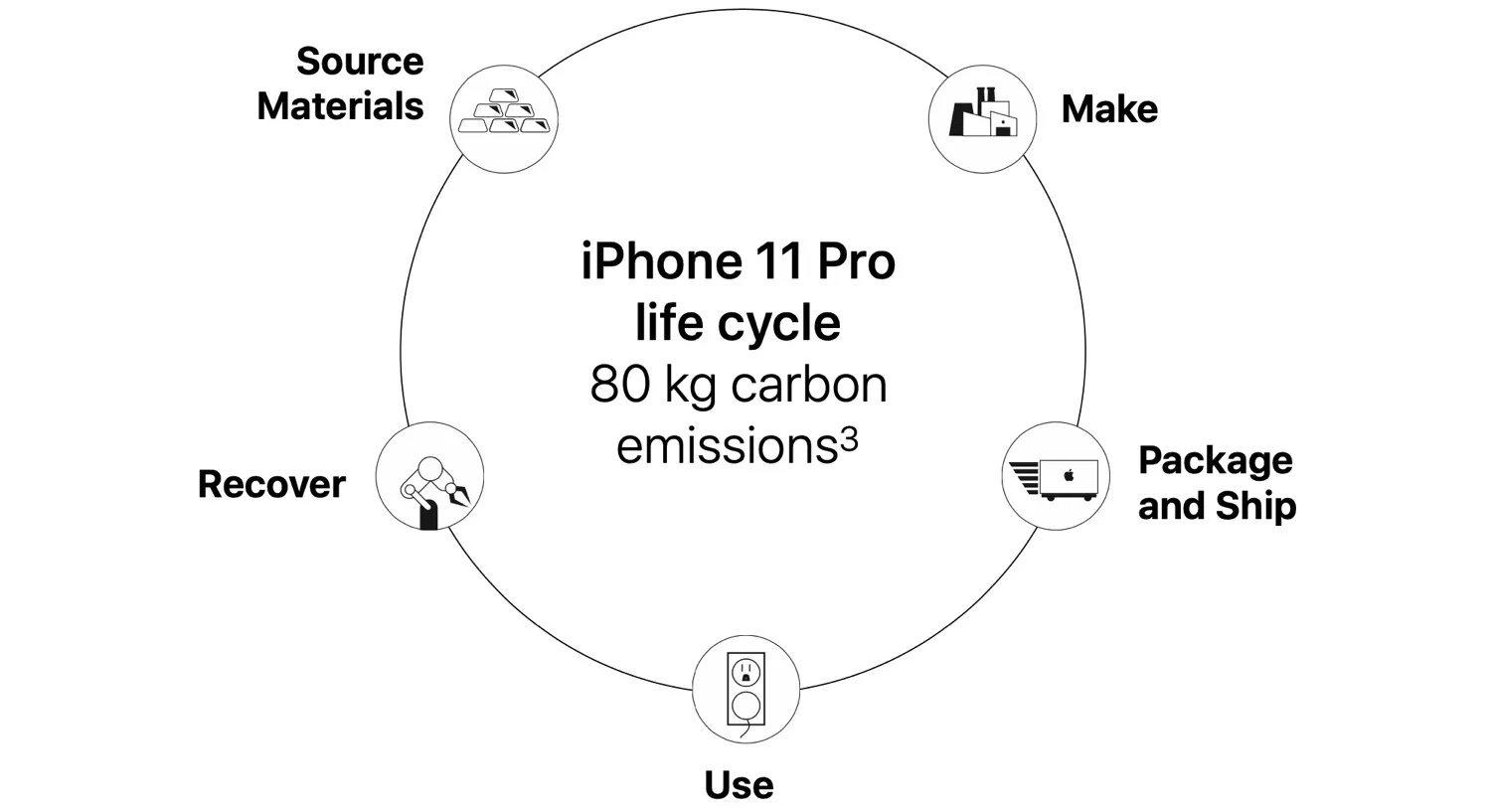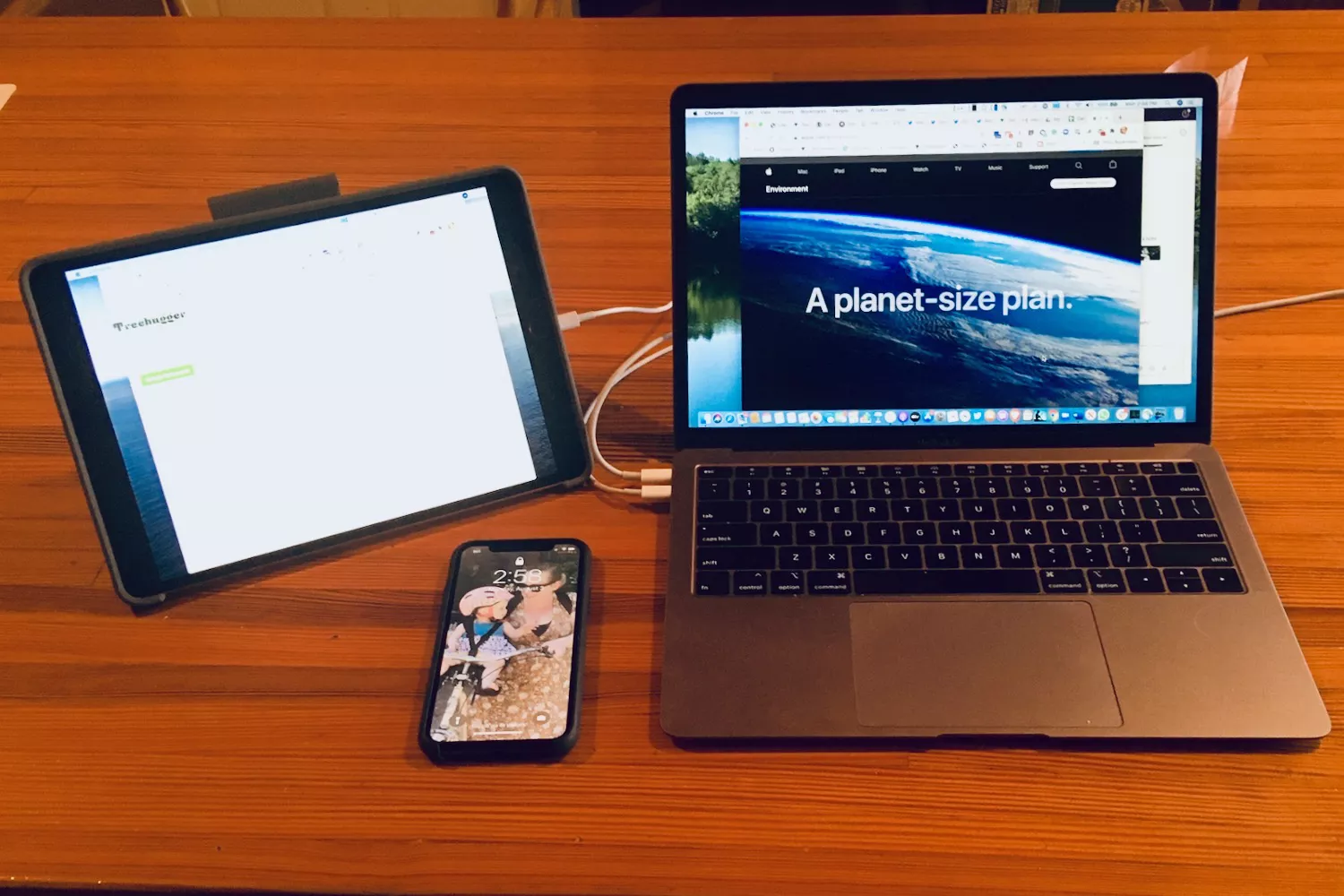Your iPhone is a Demonstration of the Importance of Embodied Carbon.
It matters so much more than operating emissions.
If we are truly going to get a handle on climate change and carbon emissions then we have to deal with the issue of embodied carbon, or what I prefer to call upfront carbon emissions: the CO2, and equivalent greenhouse gases (CO2e) emitted during the manufacture of a product. Perhaps the best demonstration of their importance can be found in Apple's 2020 Environmental Progress Report (covered here on Treehugger). The company has provided full life-cycle analyses of its products, from production through end-of-life.
With buildings or cars, operating emissions – the CO2e from running the thing – dominate the debate. But in electronics like phones or laptops, manufacturers have done an amazing job of reducing the energy required to run them to the point that it is almost inconsequential; their goal is to make the phone last as long as possible and as light as possible, and low operating emissions are the result.

So with the iPhone 11 Pro, with an estimated 3-year life and an average power grid mix, fully 83% of emissions happen upfront at the production level. And that's not just at the factory; it includes the "extraction, production, and transportation of raw materials, as well as the manufacture, transport, and assembly of all parts and product packaging."

Transport is 3% (they do a lot of flying). That's a lot; it includes "air and sea transportation of the finished product and its associated packaging from manufacturing site to regional distribution hubs. Transport of products from distribution hubs to end customers is modeled using average distances based on regional geography." After tracking my Apple Watch's journey from China to Toronto a few years ago I decided to stop ordering online; surely it is more efficient to ship a pile of watches to the store by the pallet load than to do every one individually like this.
But the use, at 13%, is the surprise. The power adapter draws 0.02 Watts. The footprint from use is 10.4 kilograms over 3 years, or 9.4 grams per day using an average power mix; that is equivalent to the carbon footprint of a teaspoon of milk. For people who have greener power than the average, it will be even less.
On the other hand, the overall footprint of 80 kilograms is not inconsequential at all. Essentially my iPhone is a giant block of embodied carbon, in the air before it even left China. Although even that is not such a giant block of carbon, it's equivalent to driving an F-150 pickup 161 miles (260 kilometers).
People who buy pickup trucks don't think about embodied carbon, they are willing to pay for more gas and Ford can build bigger gas tanks. Phones are a demonstration of how efficiency only matters to people when it gives them something they want, like more time or less weight.

But even if you collect Apple products instead of pickup trucks, it adds up. My MacBook air has a footprint of 174 kilograms (77% embodied, 7% transport, 15% operating). My iPad is 119 kilograms (89% embodied, 4% transport, 6% operating). I forgot to put my watch in the photo (44 kilograms total, 77% embodied, 9% transportation, 13% operating). That's a total of 413 kilograms. Not much, but it's roughly 80% embodied and upfront.
This all clearly demonstrates how important upfront emissions are, and how misguided we are in our dealing with carbon. I know people who madly go around unplugging the wall warts charging their electronics when it's clear that it is inconsequential compared to buying the thing in the first place.
Anyone who cares about carbon has to start thinking this way about everything. The big carbon burp that comes from making things is far more important than people think, and it matters now.
4 August 2020
Treehugger




